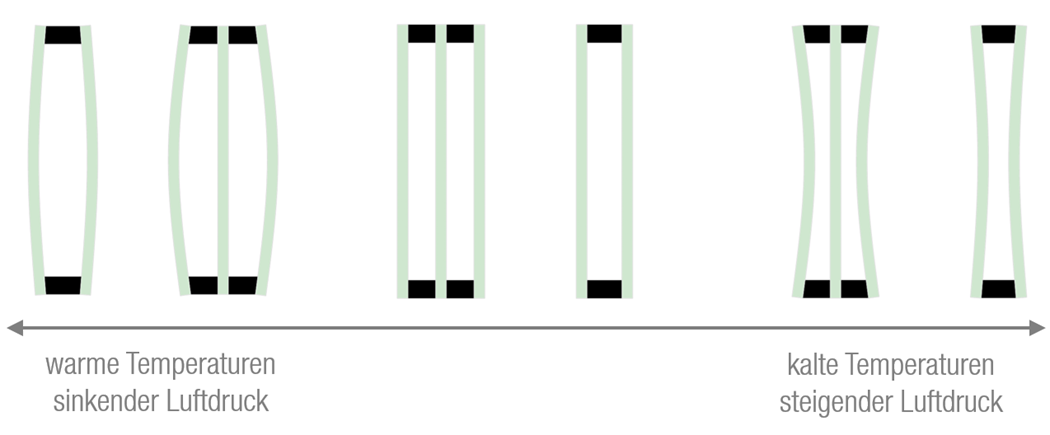ISOLAR Kompass
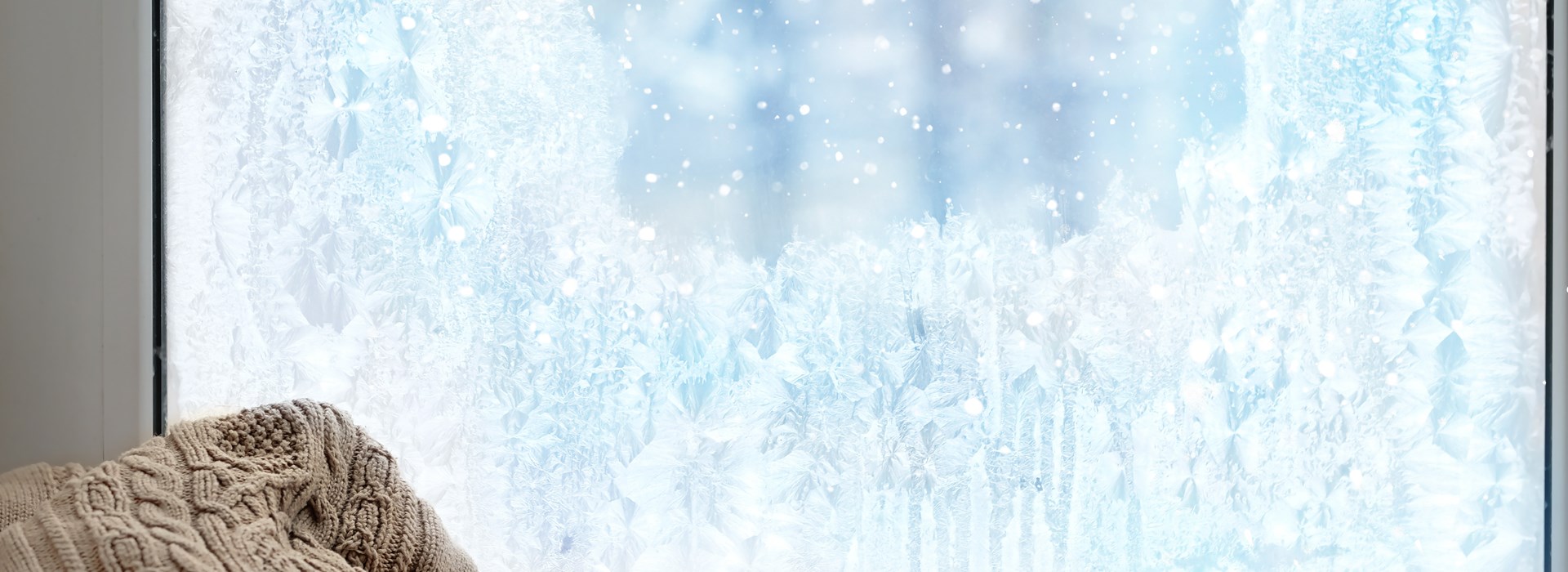
Insulating glass in winter
In the cold season, there is a particularly high demand for insulating glazing with a thermal insulation coating: they create cosy warm interiors while at the same time reducing heating costs. However, sometimes strong temperature differences between the indoor spaces and the ambient air can be the reason for some temporary irregularities on the glass panes. For instance, triple glazing in particular tends to fog up or even freeze from the outside in winter. Likewise, it is not uncommon for condensation to form on the room-side surface of old insulation glazing when the outside temperature is very low. This issue of Kompass provides, among other things, information on why these phenomena are harmless in most cases and what to keep in mind when ventilating rooms in winter. For more information, please refer to the relevant customer information in the Service section of the ISOLAR website.
Classic insulating glass units with thermal insulation coatings contribute significantly to the efficient use of heating energy, because they do not emit heat to the outside, but reflect it back into the room. This thermal insulation function is created through a coating of elemental silver. A layperson does not notice this coating on the glass surface, because it is packed in multi-layered coating. Thus, the glass appears extremely transparent and allows a high utilization of daylight. In addition, the space between the panes is filled with an inert gas, which is an even poorer conductor of heat than air. The heat inside the building is therefore not transferred from the internal pane to the external pane. In a triple thermal insulating glass, the insulating glass unit consists of two such coated glasses and two inter-pane spaces filled with inert gas, thus doubling the thermal insulation effect compared to a double glazing.
Even if no heat is to be emitted to the outside, all solar radiation from outside should enter the room with as little hindrance as possible. This solar gain additionally warms up the interior of the building.
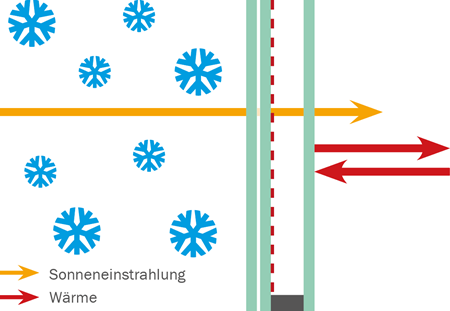
CONDENSATE ON THE INNER SURFACES OF INSULATING GLASS
If condensation occurs on the internal pane of an insulating glass unit, it means that the dew point on the internal pane is undershot. This occurs mainly with old insulating glass units with poor thermal insulation properties. However, apart from this, the degree of saturation of the room air with moisture also has a big role in this. This is why condensation is found very often around the edges of the glazing in kitchens, bathrooms, and bedrooms, where cooking, showering, and sleeping release a particularly large amount of moisture into the air in the room. In most cases, however, the air humidity can be regulated very easily by proper ventilation and one can efficiently stop mould formation. If condensate still forms on the side facing the room on cold days, it is important to wipe it dry.
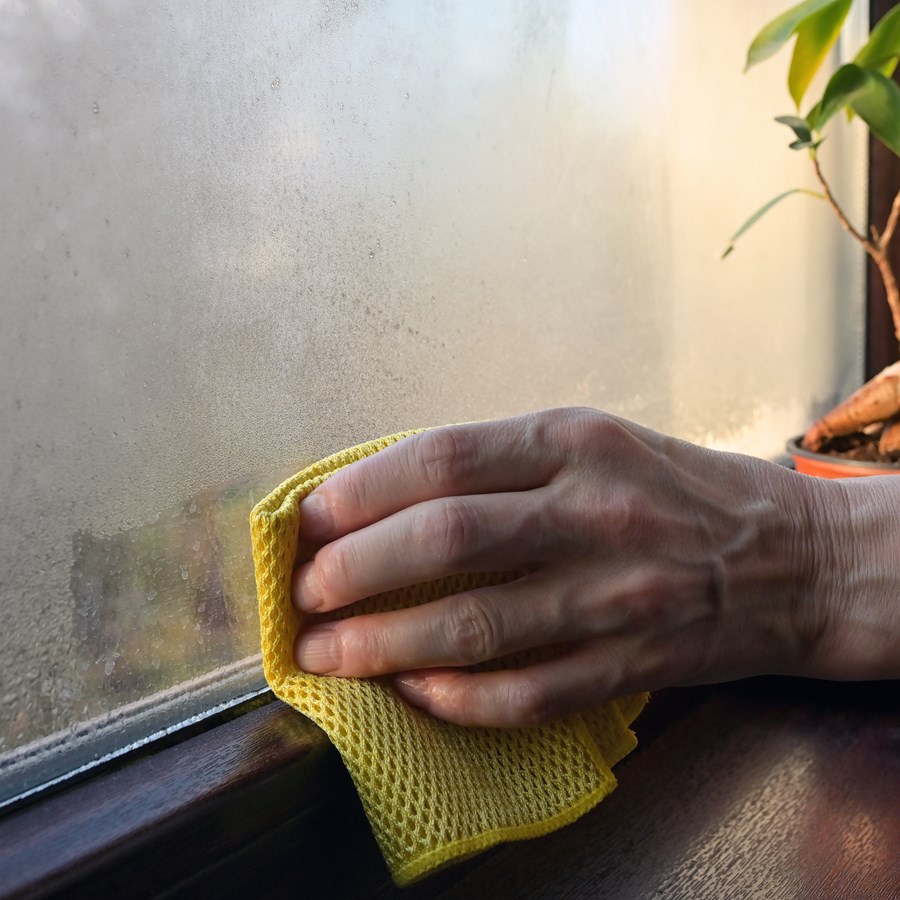
VENTILATING PROPERLY IN WINTER
The right ratio between room temperature and humidity is important, especially when it is cold outside, because the warm indoor air can store more water than the colder outdoor air. There is only one thing that will work here: Ventilating. Both the timing and the duration of room ventilation depend on the usage of the room. Damp rooms such as kitchens, bathrooms and bedrooms are best ventilated immediately after use – bedrooms immediately in the morning. A few minutes of „shock ventilation“ (a short and intensive ventilation through completely open windows) several times a day is sufficient to bring about a sustained reduction in room humidity. During these ten minutes, the windows should be opened wide and the radiators turned off. Continuous ventilation by keeping the window in the tilted position causes cooling of the wall surfaces near the window, and is therefore not recommended. Even in foggy weather, when the outside air is already saturated with moisture, moisture is still aired out of the room.
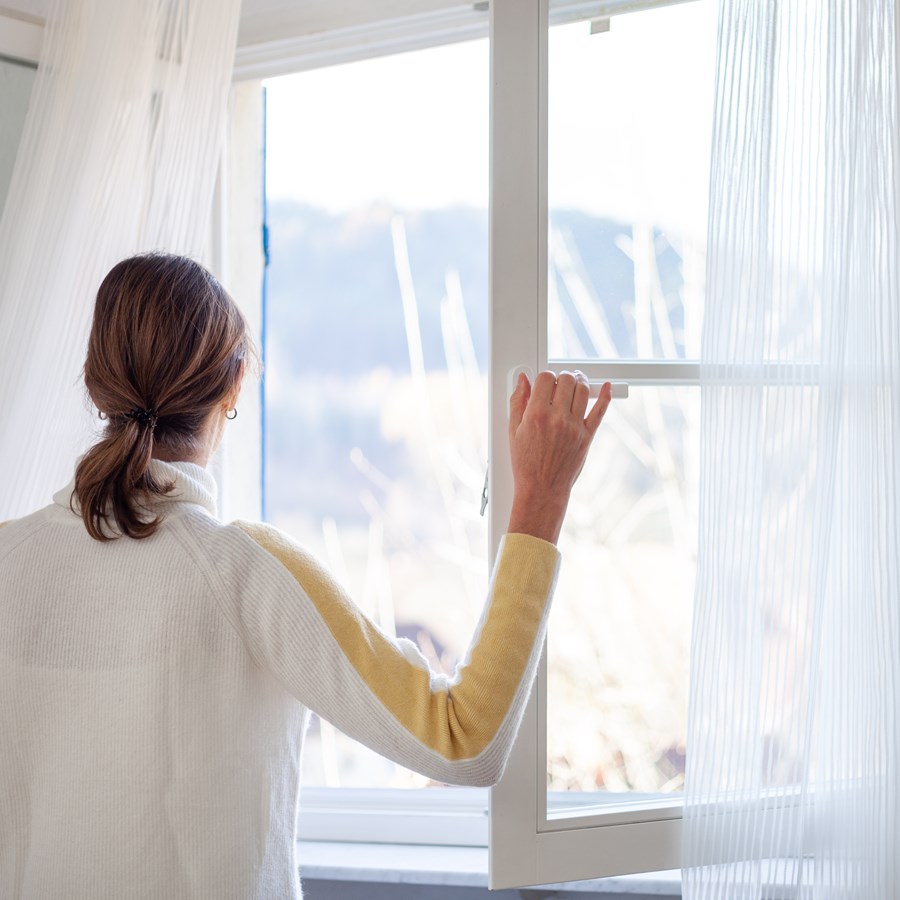
CLIMATIC LOADS ON INSULATING GLASS UNITS
Multi-pane insulating glass units prevent pressure equalization of the volume of gas or air that is filled between the panes with the ambient air. If the climatic conditions change compared to the conditions at the time of manufacturing, the general gas laws apply to the gas or air present in the space between the panes. Here, the behaviour of the insulating glazing is influenced by the ambient temperature, the solar radiation, the weather conditions (air pressure) and the installation height as compared to the height during manufacture. This may result in pressure changes in the space between the panes and deformation of the glass surfaces. Coated or body-tinted glass as well as large spaces between panes may intensify this effect. Therefore, in winter, it may happen that the panes develop an inward deflection. This effect cannot be prevented.
